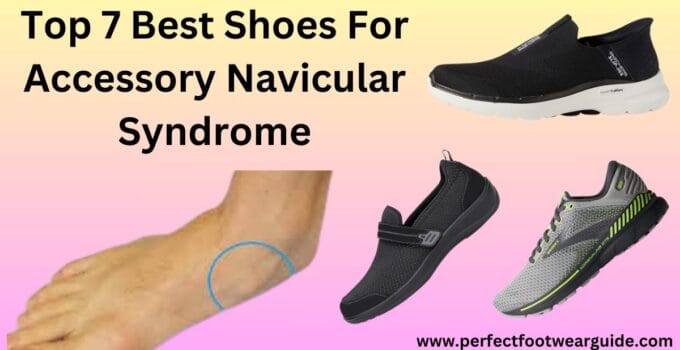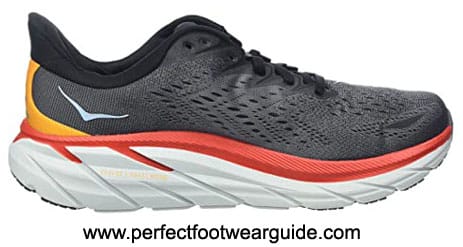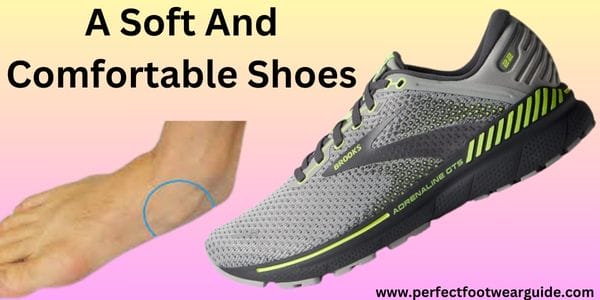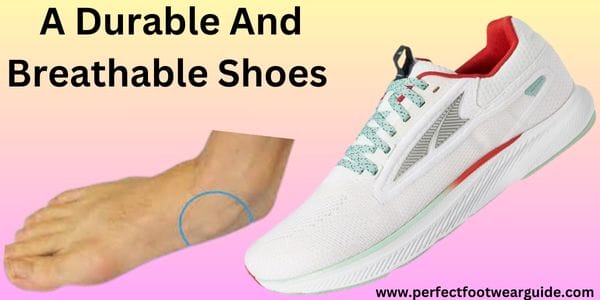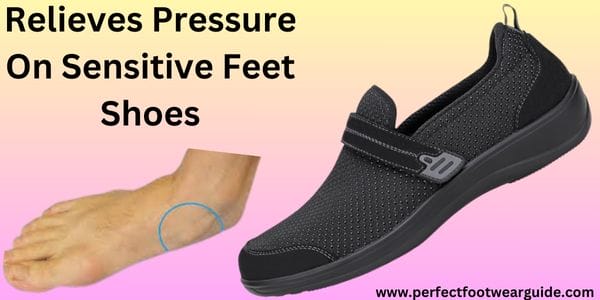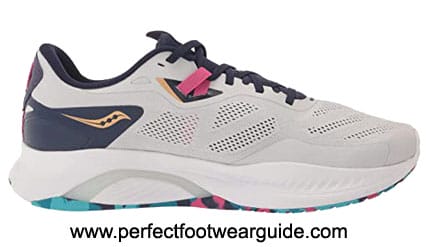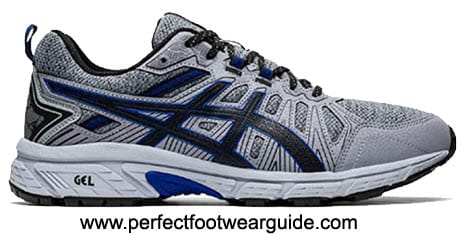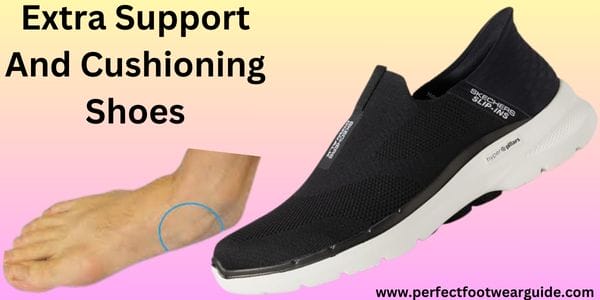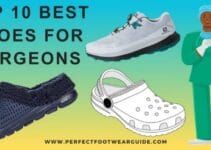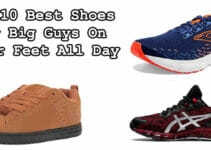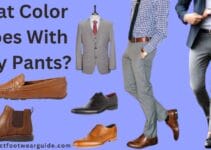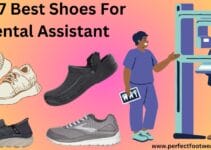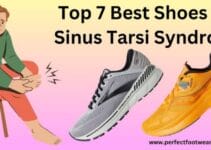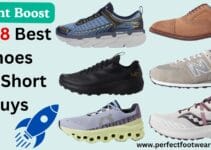Are you tired of choosing between stylish shoes and comfort because of Accessory Navicular Syndrome (ANS)? You are not alone. It can be challenging to find shoes that ease the discomfort of ANS while still looking fashionable. But do not worry. We have got you covered. Here are the top 7 best shoes for Accessory Navicular Syndrome. These shoes, from supportive sneakers to trendy flats, will keep you comfortable and in style.
Whether out for a casual stroll or to the office, these shoes keep you pain-free and on-trend. We have chosen each shoe on our list, focusing on reducing discomfort and preventing flare-ups so you don’t have to sacrifice fashion for functionality.
These shoes offer the best of both worlds. So, if you are ready to upgrade your footwear without making your ANS worse, keep reading to find the perfect pair for you. Whether you have been dealing with ANS for a while or have just been diagnosed, the right pair of shoes can make a real difference.
What Is Accessory Navicular Syndrome?
Accessory Navicular Syndrome, often called ANS, is a foot condition that can bring discomfort and pain to some unlucky feet. Let’s break down this syndrome and why it’s essential to understand.
Understanding Accessory Navicular Syndrome
Imagine your foot having an extra piece, a bonus bone, or cartilage in the arch area. That’s what Accessory Navicular Syndrome is all about. It might sound like a little extra, but it can be a big deal for those dealing with it.
The Lowdown on ANS
So, here’s the scoop. That extra bone or cartilage can cause inflammation when you have this condition. It can make your foot hurt. A lot. It’s not the end of the world, but it does mean you need to pay extra attention to your footwear.
Why Shoes Matter
Now, why all the fuss about shoes? The right pair can make a difference for someone with Accessory Navicular Syndrome. Think of it like giving your feet a comfy, supportive hug.
Choosing the Right Shoes
The best shoes for Accessory Navicular Syndrome are not just about style (though that’s important too). They are about providing the support and comfort your feet need. We are talking about shoes that understand the unique challenges of extra bone or cartilage.
Features to Look For Accessory Navicular Syndrome
Living with Accessory Navicular Syndrome comes with challenges, especially when choosing the right shoes. Here’s a breakdown of the essential features to watch when searching for footwear that provides the comfort and support needed for this condition.
1- Arch Support: What to Look For
Shoes with good arch support can make a world of difference. This feature helps distribute your body weight evenly, reducing strain on the arch of your foot and minimizing discomfort.
2- Cushioning: Why It Matters
Adequate cushioning is like giving your feet a little hug with every step. It helps absorb shock and reduces pressure on the extra bone or cartilage, providing a more comfortable experience.
3- Wide Toe Box: For Natural Movement
Look for shoes with a wide-toe box. This allows your toes to spread naturally, preventing crowding and reducing pressure on the affected area. It’s all about promoting a more natural and comfortable movement.
4- Lightweight Materials: Ease of Movement
Lightweight shoes take the load off your feet. They make moving easier without feeling like you’re carrying bricks on your feet. Opt for breathable and lightweight materials for added comfort.
5- Orthopedic Insoles: Personalized Comfort
Some shoes allow you to use custom orthopedic insoles. This is like giving your shoes a personalized touch, ensuring they fit your unique foot shape and provide the support you need.
6- Adjustable Straps: Tailored Fit
Shoes with adjustable straps are a game-changer. They let you customize the tightness and support around the affected area, ensuring a snug, comfortable fit that suits your preferences.
7- Shock Absorption Technology: Reducing Impact
Shoes with shock absorption technology are like shock absorbers for your feet. They lessen the impact of walking or running, reducing strain on the arch affected by Accessory Navicular Syndrome.
8- Breathability: Keeping It Fresh
Proper ventilation is crucial, especially if you’re dealing with foot conditions. Shoes with breathable materials help keep your feet dry, preventing excess sweating and discomfort.
When shopping for shoes with these features, it’s about finding the right fit and investing in your comfort and well-being. Each element is crucial in providing the support your feet need, making your daily activities more comfortable and enjoyable.
Remember, your shoes should feel good and contribute to your foot health. So, keep an eye out for these features, and you’ll be taking a step in the right direction for managing Accessory Navicular Syndrome with comfort and style.
So, What’s the Bottom Line?
Accessory Navicular Syndrome is like having a little extra in your foot department. It can be a pain, but the right shoes can turn that frown upside down. Look for arch support, good cushioning, a wide toe box, and lightweight materials. Your feet will thank you for it!
Top 7 Best Shoes For Accessory Navicular Syndrome Review
Suppose you seek the best shoes to wear while suffering from accessory navicular syndrome. You have come to the right place. We will review some of the top shoes that are available on the market today.
Depending on your needs and foot type, various shoes can be perfect. We have covered whether you need a lightweight option or more support.
To help make your decision easier, we have also included buyer guides for each shoe. So read on if you are starting your search or want additional advice!
1- HOKA ONE ONE Clifton 9 Shoes
The Hoka One Clifton 9 is recognized as one of the best shoes for Accessory Navicular Syndrome. These offer support, comfort, and innovative design to address specific foot health concerns.
1- APMA Approved: The Hoka Clifton 9 has earned the American Podiatric Medical Association (APMA) Seal of Acceptance, a testament to its commitment to promoting good foot health. A panel of expert podiatrists grants this recognition through rigorous wear testing and thorough application review and supporting documentation.
2- Revitalized Underfoot Experience: The Clifton 9 introduces a refreshing underfoot experience by shedding weight and adding 3mm to the stack height. This enhancement is complemented by a responsive new foam and an improved outsole design, ensuring that every step feels revitalized and comfortable.
3- Light and Plush for Everyday Miles: Whether logging in everyday miles or pushing your limits, the Clifton 9 is designed to be light and plush, providing the perfect balance between comfort and performance. Its engineering caters to the needs of both casual and serious runners.
4- Vegan Engineered Knit Upper: Embracing a vegan-friendly approach, the Clifton 9 features an engineered knit upper that delivers on performance and aligns with ethical choices. The upper provides a secure and comfortable fit while being mindful of environmental impact.
5- CMEVA Foam Midsole and Footbed: The midsole and footbed are crafted with CMEVA foam, ensuring superior cushioning and support. This technology is crucial to the shoe’s ability to absorb impact and provide a smooth, responsive ride.
6- Predecessor: Clifton 8: Building upon the success of its predecessor, the Clifton 9 maintains and enhances the qualities that runners loved in the Clifton 8. It’s an evolution that takes performance and comfort to the next level.
7- Lace-Up Closure and Round Toe Design: The Clifton 9 features a classic lace-up closure for a customizable fit and a round-toe design that accommodates a variety of foot shapes. This thoughtful design ensures that your feet feel secure and comfortable mile after mile.
8- Dermabrasion Rubber Outsole: The outsole of the Clifton 9 is equipped with durabrasion rubber, providing excellent traction and durability. Whether on the road or on the trail, you can trust the outsole to deliver reliable performance.
9- Imported: The Hoka Clifton 9 is imported, maintaining the brand’s commitment to quality and global accessibility.
For those seeking the best shoes for Accessory Navicular Syndrome, the Hoka Clifton 9 stands out with its APMA approval, plush cushioning, and thoughtful design. The engineered knit upper, CMEVA foam midsole, and supportive features make it an excellent choice for individuals looking for comfort and support in their footwear.
Pros
- The shoes are 100% synthetic fabric, which means no allergies.
- The rubber sole is durable and grippy.
- The shoes are wide-width and provide ample room for your toes.
- The shoes are perfect for people with accessory navicular syndrome.
Cons
- Some users have found that the shoes could be more comfortable.
2- Brooks Adrenaline GTS 22 Running Shoes ( Best shoes for navicular pain )
Accessory navicular syndrome, also known as navicular stress syndrome, is a condition that affects the foot and can cause pain and discomfort. If you are experiencing this condition, you may wonder if the Brooks Adrenaline GTS 22 running shoes are the best option.
While it is important to note that every person’s condition is unique, the Adrenaline GTS 22 offers several features that may benefit those with accessory navicular syndrome. The Adrenaline GTS 22 is designed with DNA LOFT cushioning in the midsole, which provides a soft and comfortable ride.
This cushioning can help to absorb shock and reduce the impact on the foot. It may help to alleviate pain and discomfort associated with accessory navicular syndrome. The shoe’s 3D Fit Print upper also provides a comfortable and breathable fit.
One of Adrenaline GTS 22’s critical features is its GuideRails holistic support system. This system is designed to keep your body in its natural alignment, reducing the risk of injury and providing a stable and supportive ride.
This can be especially beneficial for those with accessory navicular syndrome, as the condition can cause instability in the foot and ankle. It is a blown rubber outsole, which provides excellent traction and durability.
This can help to prevent slips and falls, which can be especially important for those with accessory navicular syndrome, as the condition can cause instability in the foot and ankle. It is essential to consult with a healthcare professional to determine the best course of action for your specific situation.
Pros
- Exceptional comfort.
- Excellent support.
- Top-notch performance.
- These shoes are available in a wide range of sizes.
Cons
- Limited color options.
3- Altra Escalante 3 Shoes
Are you looking for the perfect footwear to help you achieve a new personal best in your running goals? Look at the Altra Escalante 3 shoes, the ultimate combination of comfort, performance, and style. It will take your running experience to a new level.
It is a textile and synthetic upper. This shoe provides a durable and breathable structure that allows your feet to breathe during those long runs. The textile lining and insole offer a soft, cushioned feel that will keep your feet comfortable throughout your entire run.
The lace-up closure ensures a secure fit, while the pull-on style allows easy on-and-off access. The round-toe silhouette of the Escalante 3 shoe is designed to provide ample room for your toes to move freely.
It allows for a natural foot shape and improved stability. One of the standout features of this shoe is the padded tongue and collar. It provides extra cushioning and support around the ankle and instep areas.
These shoes also feature a removable insole, allowing you to customize your level of comfort and support. Individuals with Accessory Navicular Syndrome must carefully consider their footwear options to find a shoe that provides support and comfort.
The Altra Escalante 3 shoes can be a great option due to their natural foot shape design, cushioned insole, padded collar, and roomy toe box. Individuals with Accessory Navicular Syndrome can continue to engage in physical activity while minimizing pain and discomfort by selecting the right shoe.
Pros
- The shoes are designed to provide extra support for people with accessory navicular syndrome.
- They are made from a soft and lightweight fabric, making them comfortable.
- The removable comfort insole is designed to provide extra support while walking.
- The shoes come in various colors and styles to suit everyone’s needs.
Cons
- Some people may find the shoes to be too tight or uncomfortable.
4- Orthofeet Diabetic Protection Shoes ( Navicular pain running )
The Orthofeet Quincy shoes are designed to focus on foot health and comfort, making them an ideal choice for those with accessory navicular syndrome.
Wide Toe-Box: Alleviate pressure on bunions and hammertoes with the spacious, accommodating wide toe box. These allow for natural toe movement and reduce discomfort.
Irritation-Free Design: The soft, padded fabric interior is free from overlays. It eliminates potential irritation sources and ensures a comfortable fit for prolonged wear.
Cushioned Support: The cushioning PU sole and a mild rocker design add a spring to your step. It provides support and comfort for daily activities and light workouts.
Customizable Fit: The Orthofeet shoes have an adjustable strap for a personalized and secure fit. It ensures that the shoes adapt to your foot shape for maximum comfort.
Plantar Fasciitis Relief: If you’re dealing with plantar fasciitis, foot pain, knee pain, flat feet, or related issues. The Orthofeet orthotic shoes offer a comprehensive solution with premium insoles and multiple cushioning layers.
Guaranteed Comfort: Orthofeet stands behind the comfort of its shoes with a risk-free trial. Walk comfortably and pain-free, or get your money back. Free shipping and returns make trying these shoes a hassle-free experience.
Moisture Management: The Dryplex fabric wicks away sweat, keeping your feet dry and comfortable throughout the day.
Versatile Style: Whether you’re going for a jog or a light workout. The Orthofeet Quincy shoes offer comfort and style.
Specifications:
- Upper Material: Stretchy fabric for a contoured fit.
- Lining: Cotton lining for added comfort.
- Sole Material: Polyurethane for excellent stability.
- Closure: Classic lace-up closure for a secure fit.
- Toe Design: Round toe for a classic look.
- Ease of Wear: Pull tabs for easy wear and removal.
Invest in the Orthofeet Quincy shoes to experience the ideal blend of comfort, support, and style. It is specially tailored for those seeking the best shoes for the accessory navicular syndrome.
Pros
- Orthofeet shoes are known for their comfort.
- They are best for people with plantar fasciitis or foot pain.
- They come in a variety of colors and styles.
- They are available in sizes to fit most feet.
- The orthotic insoles allow you to customize the fit to your own feet.
Cons
- Orthofeet shoes may only be suitable for some.
5- Saucony Guide 15 Running Shoes
The Saucony Ride 15 is a fantastic choice for runners aiming to boost their running journey with comfort, support, and style. Let’s delve into the key features and advantages of these shoes, especially for individuals dealing with Accessory Navicular Syndrome:
1- Breathable Comfort: The shoe’s textile upper ensures your feet can breathe. This is super important for anyone with specific foot conditions, keeping your feet comfy and contributing to overall foot health.
2- Customizable Fit: Thanks to the lace-up closure system, you can tailor the fit to your liking. For those managing Accessory Navicular Syndrome, a snug fit adds stability, reducing discomfort during various activities.
3- Perfect Balance of Cushioning: A good balance of support and responsiveness makes this mid-level cushioning ideal for long-distance running. This is key for individuals with Accessory Navicular Syndrome, absorbing impact forces during every step.
4- Durable Stability: The man-made outsole brings durability to the table. It’s crafted to provide stability, making it an excellent choice for those needing that extra support.
5- Style Included: Beyond its functional aspects, the Saucony Ride 15 keeps its kind strong. You get a sleek design and practical benefits tailored for people with Accessory Navicular Syndrome.
The Saucony Ride 15 is an outstanding option for individuals seeking the best shoes for Accessory Navicular Syndrome. It has a considerate design, advanced features, and a commitment to foot health. These shoes are poised to enhance the running experience for individuals managing specific foot conditions.
Please note that while the product is carefully designed for comfort and support. Consulting with a healthcare professional for personalized recommendations regarding footwear is always advisable, especially for specific medical conditions like accessory navicular syndrome.
Pros
- Lightweight and smooth ride.
- Support for the accessory navicular syndrome.
- Fits just right.
- Durable.
Cons
- It may not be suitable for extremely hot or humid environments.
6- ASICS GEL-Kayano 29 Shoes ( Shoe inserts for accessory navicular )
The ASICS GEL-Kayano 29 is a top-notch sports shoe for folks who want comfy and supportive kicks for all activities. These shoes are a mix of relaxed style and practicality. It is a solid pick for anyone on the move, whether hitting the gym, jogging, or just being on their feet all day.
Fancy Materials: These shoes are made with synthetic, leather, and mesh materials in the upper and lining. That means they feel soft and comfy all day long.
FF BLAST PLUS Cushioning: These shoes have extra comfy cushioning called FF BLAST PLUS. It’s like a soft and supportive platform for your feet.
External Heel Counter: A low-profile external heel counter adds stability to the shoes. It’s like having a little extra support during your active moves.
Rearfoot GEL Technology: These shoes have Rearfoot GEL technology. It’s excellent at soaking up shock, which is helpful for people dealing with accessory navicular syndrome.
OrthoLite x-55 Sockliner: The sock liner inside is called OrthoLite x-55. It’s there to give you top-notch cushioning and extra comfort.
AHARPLUS Heel Plug: The heel plug thingy, called AHARPLUS, makes the bottom of the shoes last longer. So, these shoes are built to stick around for a while.
3D SPACE CONSTRUCTION: This fancy feature, 3D SPACE CONSTRUCTION, makes your feet feel good when you step. It’s like an upgrade for performance and comfort.
LITETRUSS Stability Feature: The midsole has LITETRUSS stability tech. This gives you better support in the middle of your foot, essential for folks with accessory navicular syndrome.
High Traction Rubber Outsole: The bottom of these shoes is made of rubber that grips well. So you won’t be slipping and sliding on different surfaces.
Classic Design: These shoes look classic with a regular lace-up closure, round toe, comfy padded collar, and tongue. Plus, an excellent brand logo is in the language for extra style.
Imported Quality: These shoes are made with care and expertise and are imported to ensure they’re top-notch.
So, if you are after comfy and supportive shoes that look cool, the ASICS GEL-Kayano 29 might be your new best pals.
Pros
- The Rearfoot GEL cushioning system attenuates shock during the impact phase.
- Springy midsole helps reduce impact and increases overall foot comfort.
- Available in multiple colors and prints.
- They can be worn with or without socks, making them perfect for any activity.
Cons
- Shoes may be too tight in the beginning.
7- SKECHERS Performance Go Walk 6 Slip-In Sneaker
The SKECHERS Performance Walk 6 sneakers are designed with features that make them a good choice for people with accessory navicular syndrome. However, it is essential to note that the best shoes for this condition can vary depending on the individual’s specific needs and symptoms.
Accessory navicular syndrome is a condition that occurs when there is an extra bone in the foot near the navicular bone. This can cause pain and discomfort, especially during physical activity.
People with this condition may benefit from shoes that provide extra support and cushioning in the arch and heel areas. The SKECHERS sneakers feature a unique Comfort Pillow design on the heel. It adds extra cushioning and support.
The Skechers Air-Cooled Goga Mat breathable insole with high-rebound cushioning also provides excellent shock absorption, reducing the impact of each step. The ULTRA GO cushioning system is lightweight and responsive.
It provides good support while maintaining a comfortable feel. The high-rebound Hyper Pillar Technology adds extra stability, benefiting people with accessory navicular syndrome. However, it is essential to note that everyone’s feet are different.
And what works for one person may only work for one person. It is always best to consult a healthcare professional or a podiatrist before choosing shoes for a specific condition.
Pros
- It is excellent for extended periods of walking or standing.
- These sneakers are feet cool and dry during physical activity.
- These provide superior shock absorption and a comfortable feel.
- They add extra support and stability.
Cons
- Not found.
Stylish Options for Fashion Enthusiasts
Gone are the days of compromising style for comfort, especially for those with Accessory Navicular Syndrome. Let’s delve into how you can keep your style game strong while prioritizing the health of your feet.
1- Embracing the Marriage of Style and Support
Say goodbye to the misconception that comfortable shoes can’t be stylish. Modern shoe brands create footwear that provides essential foot support and keeps you in vogue. This means you can now enjoy a sleek and fashionable look without sacrificing the well-being of your feet.
2- Diverse Stylish Options
Fashion enthusiasts with Accessory Navicular Syndrome have a plethora of options to choose from. Whether you’re into casual sneakers or chic flats, the market offers a broad spectrum of stylish footwear tailored to your needs. This variety ensures you don’t compromise your style preferences for comfort.
3- Trendy Designs for Every Occasion
No matter the event, there’s a trendy shoe design to match. For laid-back outings, consider stylish sneakers equipped with supportive features. These enhance your casual look and provide the necessary support for your feet. Explore elegant flats and low-heeled shoes that radiate sophistication without compromising comfort on more formal occasions.
4- Explore and Experiment
The key to finding the perfect stylish yet supportive footwear lies in exploration. With the increasing demand for fashionable yet comfortable shoes, you’ll discover options that align with your unique style while addressing the specific needs of Accessory Navicular Syndrome.
5- Express Yourself with Confidence
Remember, staying on-trend doesn’t mean enduring discomfort. Dive into the world of stylish shoes and let your fashion choices reflect your personality. With the proper footwear, you can confidently step into any occasion, showcasing your unique style while ensuring your feet receive the care they deserve.
Fashion is an expression of oneself. You can make a statement with the proper footwear without compromising comfort or style. So, explore the diverse and stylish options available, and stride into each day with confidence and flair.
Types of Shoes Recommended for Accessory Navicular Syndrome
Navigating life with Accessory Navicular Syndrome (ANS) can be a literal pain in the foot, but fear not! The right shoes can be your foot’s best friend. Let’s break down the shoe features that are not just comfy but feel like a cozy hug for your feet when ANS gives you a hard time.
Cushioned Comfort: The Basics
1- Athletic Shoes
Why They Work: Athletic shoes are like the superheroes of footwear. They swoop in with excellent cushioning and support, which is crucial for ANS comfort.
Key Features: Look for those with extra padding, shock absorption, and arch support. These features ensure your feet are cradled in comfort.
2- Running Shoes
Why They Work: Running shoes are not just for the track; they are a top choice for ANS sufferers due to their superb cushioning.
Key Features: Opt for models with gel cushioning and stability technology. These elements provide extra protection for your feet during each step.
3- Walking Shoes
Why They Work: Walking shoes are your go-to if a stroll is more your speed. They strike the right balance of comfort and support for your daily activities.
Key Features: Look for shoes with a wide toe box and breathable materials. The wide toe box allows your toes to spread naturally, preventing discomfort.
Bonus Tips for Shoe Shopping
Fit is Key
Finding the right fit is like hitting the jackpot. Ensure your shoes are snug but tight, especially around the affected area.
Trial and Error
Feel free to try different styles and brands. Your feet are unique, and the perfect pair might take a bit of exploration.
Comfort Over Style
While stylish shoes are tempting, prioritize comfort. Your feet will thank you later.
Regular Checks
Foot sizes can change over time. Regularly check your shoe size to ensure you wear the right fit.
Remember, your shoes should feel like a warm embrace, contributing to your overall comfort and well-being. So, lace up those supportive shoes and take a step towards managing ANS with extra style and comfort!
Tips for Proper Foot Care
Caring for your feet is essential, especially when dealing with Accessory Navicular Syndrome. Here are some easy tips to keep your feet happy and healthy:
1- Stretch it Out: Start your day with simple stretches like toe curls and ankle circles. This helps make your feet more flexible and eases any tension.
2- Sock Selection: Pick socks made from moisture-wicking materials to keep your feet dry and happy. Avoid tight elastic bands that could bug your circulation.
3- Podiatrist Pit Stops: Regular checkups with a podiatrist are like tune-ups for your feet. They can give personalized advice, spot issues early, and suggest the right shoes or inserts.
4- Nail TLC: Trim your toenails straight across to dodge ingrown nails. Moisturize around your nails, too, to keep things smooth.
5- Shoe Support: Invest in shoes with good arch support and cushioning. Brands like New Balance, Brooks, and ASICS have solid options for foot-friendly footwear.
6- Mix and Match Shoes: Don’t use one pair of shoes daily. Mix it up to give your feet a break and spread the pressure around.
7- Easy Does It: Go for low-impact exercises like swimming, cycling, or yoga. Check with your doctor for activities that suit your fitness level and foot vibes.
8- Elevate for Relief: If your feet swell, give them a break. Elevate them on a pillow to boost blood flow and ease inflammation.
9- No Barefoot Adventures: Resist the urge to go barefoot. Wear supportive slippers or shoes to guard against accidents and give your arches some love.
10- DIY Foot Massage: Treat your feet to a DIY massage with your hands, a tennis ball, or a foot roller. It boosts blood flow and chills your feet out.
11- Soak and Relax: Enjoy a warm foot soak to relax your muscles. Add Epsom salts for extra calm vibes. Just make sure the water isn’t too hot!
12- Keep an Eye Out: Regularly check your feet for changes. Watch for redness, swelling, or signs of trouble. Early detection is critical.
13- Stay Hydrated: Drink enough water daily to keep your skin hydrated and avoid dryness or cracking.
14- Indoor Shoe Game: Even inside, wear supportive footwear. It keeps your feet aligned and comfy.
15- Listen to Your Body: Pay attention if something feels wrong. Persistent pain needs attention, so consult the pros and make choices that keep your feet happy.
Caring for your feet is not rocket science, but makes a big difference. These tips and good shoes can help you manage Accessory Navicular Syndrome and keep your feet feeling fantastic every day.
Common Mistakes to Avoid When Choosing Shoes for Accessory Navicular Syndrome
Selecting the right shoes is vital for managing Accessory Navicular Syndrome, which affects the feet. Unfortunately, some common mistakes can worsen discomfort and hinder foot health. Here’s a closer look at what to steer clear of when picking footwear:
Mistake 1: Ignoring Foot Pain
Ignoring foot pain is a significant blunder. Some people brush off discomfort, assuming it’s temporary or unrelated to their shoes. Dismissing pain can lead to more issues, so addressing any discomfort promptly is crucial.
Mistake 2: Prioritizing Fashion Over Function
While stylish shoes are tempting, putting fashion before function is a mistake. Fashion-forward footwear might lack the support needed for those with Accessory Navicular Syndrome. Striking a balance between style and foot-specific needs is essential.
Mistake 3: Neglecting Professional Advice
Relying solely on personal judgment without seeking professional advice is another mistake. Consulting a podiatrist or healthcare professional ensures informed decisions based on your unique foot structure and condition.
Individuals with Accessory Navicular Syndrome can make wise choices in comfortable and supportive footwear by avoiding these common mistakes. Pay attention to foot pain, prioritize functionality, and seek professional guidance for a healthier and more comfortable walking experience.
Treatment tips recommended for accessory navicular syndrome
Dealing with Accessory Navicular Syndrome (ANS) can be a real pain literally. If you have been diagnosed with this condition, finding the proper treatment is crucial for managing discomfort and ensuring you can go about your day without being held back. We will walk you through some treatment tips recommended for Accessory Navicular Syndrome, offering practical advice for a more comfortable and active life.
1- Rest and Ice
When your foot is acting up, could you give it some TLC? Rest is crucial for your foot to recover; applying ice can help reduce inflammation. Make friends with the ice pack. It might become your foot’s new bestie.
2- Choose the Right Shoes
Not all shoes are created equal, especially when you have ANS. Look for shoes with good arch support, cushioning, and a roomy toe box. This trio can make a difference in how your foot feels at the end of the day.
3- Orthopedic Insoles
Consider investing in orthopedic insoles. These are like magic cushions for your feet, providing extra support right where needed. Plus, they are often customizable, ensuring a snug fit tailored to your foot’s unique shape.
4- Physical Therapy
Working with a physical therapist can be a game-changer. They’ll guide you through exercises to strengthen your foot and improve flexibility. Think of it as a workout plan for your feet. They deserve the attention!
5- Anti-Inflammatory Medications
Sometimes, over-the-counter anti-inflammatory medications can be your ally in the battle against ANS-related pain. Just check with your healthcare provider before making them a routine.
6- Supportive Braces or Taping
For added stability, consider using supportive braces or taping techniques. These can help reduce strain on your foot, allowing you to move more comfortably.
7- Weight Management
Maintaining a healthy weight can lessen the load on your feet. Every pound you shed is like a little victory for your arches, so consider adopting a lifestyle that promotes overall health.
8- Regular Checkups
Keep in touch with your podiatrist. Regular checkups can help monitor your condition and ensure you are on the right track with your treatment plan. It’s like having a foot expert in your corner.
Dealing with Accessory Navicular Syndrome may be challenging. Still, you can take steps (pun intended) toward a more comfortable life with the right treatment tips. Remember, it’s all about finding what works best for you. Whether it’s a cozy pair of shoes, some strategic icing, or a therapeutic foot workout, these tips can make a real difference.
Conclusion
As someone with accessory navicular syndrome, I must have a good pair of shoes that will not aggravate my condition. I have researched many different types and brands of shoes over the years to find the perfect fit and style.
Still, I return them because they are too tight or cause pain. I compiled a list of the top 7 best shoes for accessory navicular syndrome. This will help you find the perfect pair of shoes that won’t make your life miserable!
FAQs
Here are some questions and answers for choosing to help you with the best shoes for accessory navicular syndrome:
What shoes are best for Navicular?
Shoes with good arch support and cushioning are best for Navicular pain.
What helps accessory navicular pain?
Rest, ice, anti-inflammatory medication, physical therapy, and orthotic inserts can help with accessory navicular pain.
Is accessory navicular syndrome a disability?
Accessory navicular syndrome is not typically considered a disability unless it significantly impairs mobility or daily activities.
Should I get my accessory navicular removed?
Whether to remove the accessory navicular bone depends on the severity of symptoms and the advice of a medical professional.
